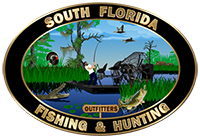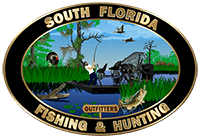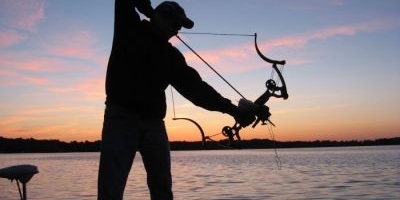If you’re new to bowfishing, having the right bowfishing gear is essential for success. Bowfishing is an exhilarating sport that combines the precision of archery with the excitement of fishing, but it requires specific equipment to ensure you’re ready for action. From bows and reels to essential attachments, this guide walks you through everything you need to assemble the perfect bowfishing set up and make your first outing a memorable one.
The Essentials of a Bowfishing Set Up
Setting up for bowfishing can feel overwhelming at first, but understanding the core components will simplify the process. A complete bowfishing set up includes a bow, reel, arrow, and various accessories. Let’s explore each piece in detail.
1. The Bow
The bow is the heart of your gear. Unlike traditional hunting or target bows, bowfishing bows are tailored for quick, repetitive shots at close-range targets like fish. Here are your options:
- Compound Bows: These are lightweight, adjustable, and great for beginners. The pulleys allow for easier draw and better accuracy.
- Recurve Bows: Known for their simplicity, recurve bows are effective and easy to maintain. They’re an excellent choice for those who prefer traditional equipment.
Pro Tip: Look for bows specifically labeled for bowfishing, as they are designed to withstand wet conditions and frequent use. Most beginners start with a compound bow for its versatility and ease of use.
2. Bowfishing Reels
Your reel is critical for retrieving your arrow after a shot. Bowfishing reels come in three main types, each offering unique advantages:
- Hand-Wrap Reels: These are the simplest and most affordable option. While functional, they require manual line wrapping, which can slow you down.
- Spincast Reels: These reels work like traditional fishing reels, making them a popular choice for beginners. They’re easy to use and can handle the demands of bowfishing.
- Retriever Reels: Featuring a bottle system, retriever reels are fast, efficient, and less prone to tangling. They’re a top choice for avid bowfishers.
When choosing a reel, consider your budget, ease of use, and the type of water you’ll be fishing in. For beginners, a spincast reel offers the perfect balance of affordability and functionality.
3. Bowfishing Arrows
Bowfishing arrows are heavier than standard arrows, allowing them to penetrate the water and securely hit the target. Key features of bowfishing arrows include:
- Fiberglass or Carbon Material: These materials ensure durability and strength.
- Barbed Tips: Barbed tips are essential for holding onto the fish after a shot. Many tips are removable for easy cleaning and maintenance.
- Safety Slides: These are critical for preventing the dangerous snapback of the arrow line. Always ensure your arrows are equipped with safety slides.
Pro Tip: Bring at least three arrows on every trip. You’ll appreciate the extras in case you lose or damage one.
4. Bowfishing Rigs
A bowfishing rig is the combination of your bow, reel, and arrows. For beginners, pre-assembled rigs are an excellent way to get started. These kits ensure that all components are compatible and save you time in setting up.
As you gain experience, you can customize your rig with advanced features like upgraded reels or specialized arrows tailored to your preferred fishing environment.
5. Bowfishing Attachments
Attachments can enhance your bow’s performance and improve your overall experience. Consider the following:
- Finger Guards: Protect your fingers from repetitive strain and potential blisters.
- Arrow Rests: Keep your arrow aligned for smoother and more accurate shots.
- Lights: Mounted lights are invaluable for night bowfishing, improving visibility and making it easier to spot fish.
- Reel Seats and Brackets: These help secure your reel to the bow, ensuring a stable and reliable setup.
Adding these accessories to your bowfishing set up can significantly enhance your comfort and effectiveness.
Safety and Maintenance Tips
Bowfishing is thrilling, but safety should always come first. Follow these tips to stay safe and maintain your gear:
- Use Safety Slides: Never skip this step. A snapback can cause serious injury.
- Inspect Your Gear: Check your bow, reel, and arrows for damage before each trip.
- Wear Gloves: Protect your hands from fishing line burns and cuts.
- Practice Form: Spend time practicing your shots in controlled environments to build confidence and accuracy.
Regular maintenance is also crucial for extending the life of your gear. Clean and dry your equipment after every trip, especially if you’re bowfishing in saltwater.
Getting Started with Bowfishing
Now that you’ve gathered your bowfishing gear, it’s time to hit the water! Beginners should focus on shallow areas with clear water and abundant fish. Common targets for beginners include invasive species like carp, gar, and tilapia, which are plentiful and legal to fish in many areas.
Here are some tips for your first outing:
- Research Local Regulations: Ensure you’re fishing legally and ethically in your area.
- Choose the Right Time: Early morning and nighttime are often the best times for bowfishing, as fish are more active.
- Bring Backup Gear: Always have extra arrows, gloves, and line to avoid interruptions.
Join Us for Bowfishing in Florida!
Bowfishing is an exciting way to combine fishing and archery, and with the right bowfishing gear, anyone can get started. From selecting the perfect bow to setting up your reel and arrows, this checklist ensures you’re fully prepared for your first trip.If you’re looking for an unforgettable outdoor adventure, bowfishing in Florida is the experience you’ve been waiting for! Florida’s abundant waterways and diverse fish species make it a premier destination for bowfishing enthusiasts of all skill levels. Whether you’re aiming for carp in shallow waters or exploring nighttime bowfishing adventures, the right setup will help you make the most of every outing. Gear up, stay safe, and enjoy the thrill of bowfishing!



